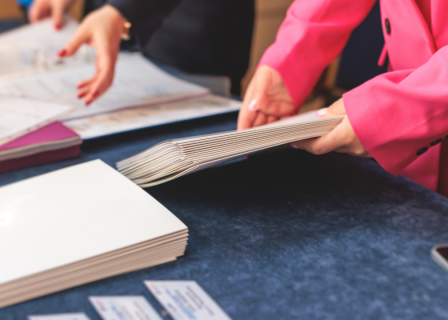Money laundering is an illegal procedure that aims to bring funds obtained from criminal activities back into circulation. Most often, the process consists of three stages: placement, masking, and integration. What exactly does it consist of?
Laundering money from illegal sources
Introducing proceeds from illegal sources into the financial banking system is not easy, especially due to constantly tightening regulations. This process aims to move out purified money that can be traded legally. This is usually done through placement, masking, and integration of funds, but criminals use different methods of operation.
Placement
Deposition is the first stage of the money laundering process. Introducing funds from an illegal source (e.g., theft, sale of prohibited funds and services) into the financial-banking system converts cash into other tangible values.
Placement is the first phase. For this reason, identifying the source of income is by far the easiest at this stage. At this stage, quickly checking whether cash introduced into a financial institution is money laundering is possible after noticing non-standard activity that may have the hallmarks of placement.
Various methods can be used for carrying out placement. Most often, it is carried out by:
- Depositing money into an account—especially large sums,
- Engaging in suspicious bank transfers,
- Buying material goods, such as real estate and other assets of significant value,
- Investing in financial instruments or purchasing insurance.
Concepts that are directly related to placement include:
- Structuring: it involves the sharing of deposits by multiple individuals. In this situation, each of them contributes a small amount, which may go unnoticed by financial institutions.
- Smurfing: this involves fragmenting contributions. It works similarly to structuring, and involves many small deposits into bank accounts (below limits). In this case, the money is transferred through so-called "poles," who often do not realise that the money comes from illegal sources.
- Blending involves mixing money and dirty money. This method is used for business entities that are characterised by large and difficult-to-estimate cash flows. Blending is used in restaurants and casinos, among others.
- Refining is the exchange of banknotes for other currencies. This applies to values that are not subject to registration.
Where is the placement stage most often implemented?
Placement is possible, among other things, in enterprises that are characterised by very irregular and difficult-to-determine cash flow. Restaurants primarily implement it. The margin on the products sold there is large, and customers often pay with cash. Placement is also performed in hotels, casinos, beauty salons, car washes, or laundries. State anti-money laundering authorities often inspect these facilities.
Layering
Layering is the second stage of money laundering. It aims to conceal the source of assets through a series of transactions that follow one another. Masking is usually implemented when the money is no longer cash. It has been placed in tangible goods or deposited into an account.
Masking of funds is aimed at separating illicit income from its source, so that it is impossible to determine whether the money comes from illegal transactions. It helps ensure the anonymity of the owner of the assets and the incorporation of funds obtained from crime into legitimate economic transactions.
Various methods are used for masking. The most common are:
- Make multiple bank transfers,
- Loans that are secured by bank deposits,
- There are two main methods for transferring funds internationally: physical transportation of cash or electronic transfers,
- Cash transfers facilitated by financial services companies,
- Trade in high-value goods—real estate, gold, precious stones, or jewellery.
Integration
The final stage of money laundering is integration. Its goal is to introduce laundered funds into the economic system. It aims to introduce laundered funds into the economic system without raising suspicion of illegal origins. Most often, the money after the masking phase is already authenticated with issued documents from banks, financial institutions, and economic organizations. At this point, it is extremely difficult to demonstrate that they come from illegal sources.
During integration stage, the holder of the money can easily justify where the funds came from, including in the case of large assets. At this time, they are legally sanctioned for economic transactions.
The integration stage involves performing the following operations:
- Buy/sell: such transactions are fictitious; there is no actual transfer of goods,
- Managing imports and exports through transfer pricing practices,
- Acquisition of a company in bankruptcy,
- Bank loans.
Counteracting money laundering
Money laundering is an illegal practice. It falls under Article 299 of the Criminal Code. According to these provisions, those who engage in such activities face imprisonment of up to 8 years.
The General Inspector of Financial Information (GIIF) is responsible for combating money laundering. It investigates the course of transactions that, at first glance, appear suspicious. It places them on hold and issues account blocks, which can only be removed after successfully resolving the case. The GIIF can demand that the trader provide access to all transaction information.
Currently, companies operating in Poland must comply with AML regulations. This is the law on anti-money laundering and terrorism financing. Following its requirements makes it easier to detect illegal transactions and determine the source of money. Many entrepreneurs choose to outsource AML, i.e., the constant support of specialists who monitor the compliance of the company's processes with these regulations.






